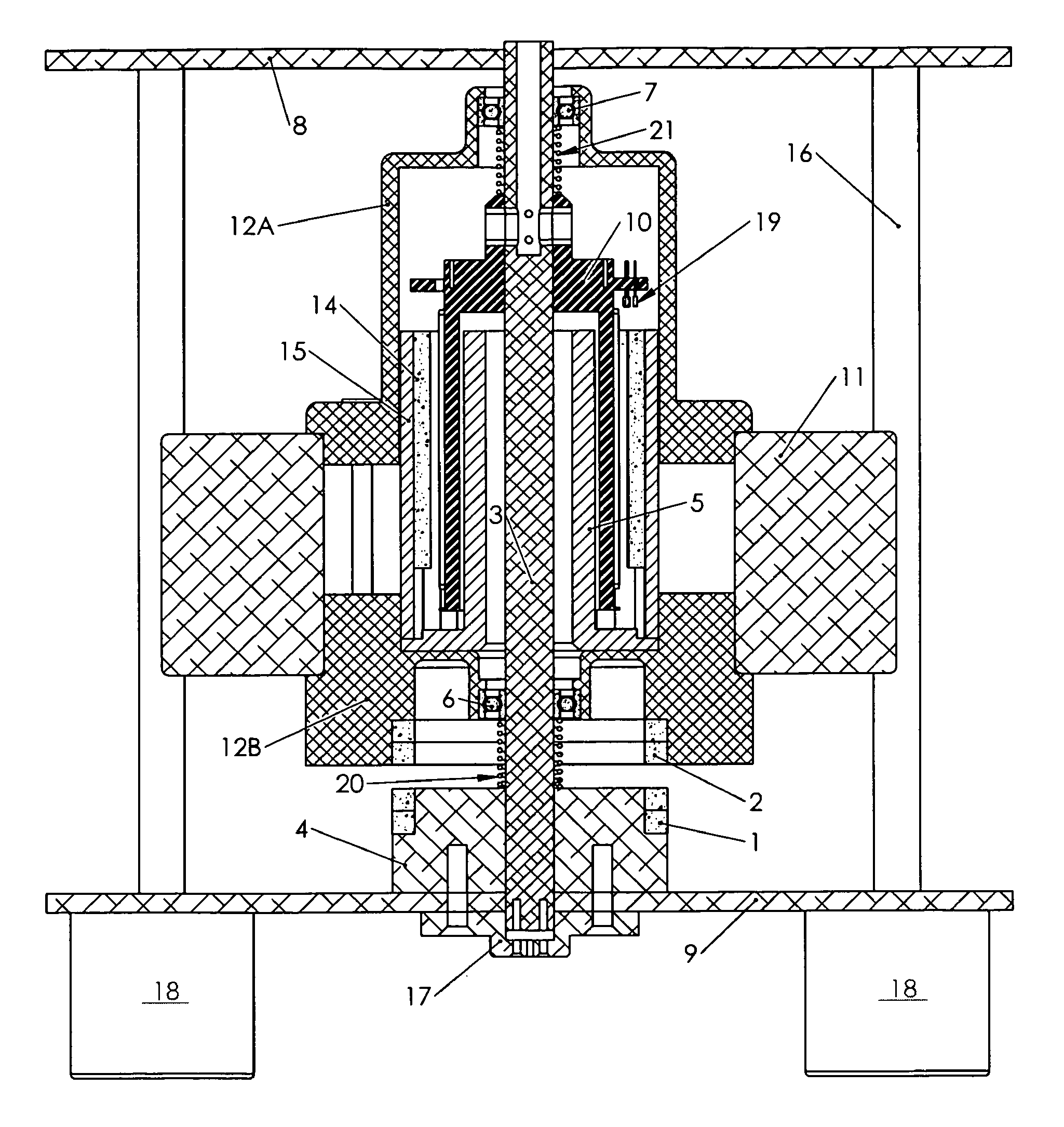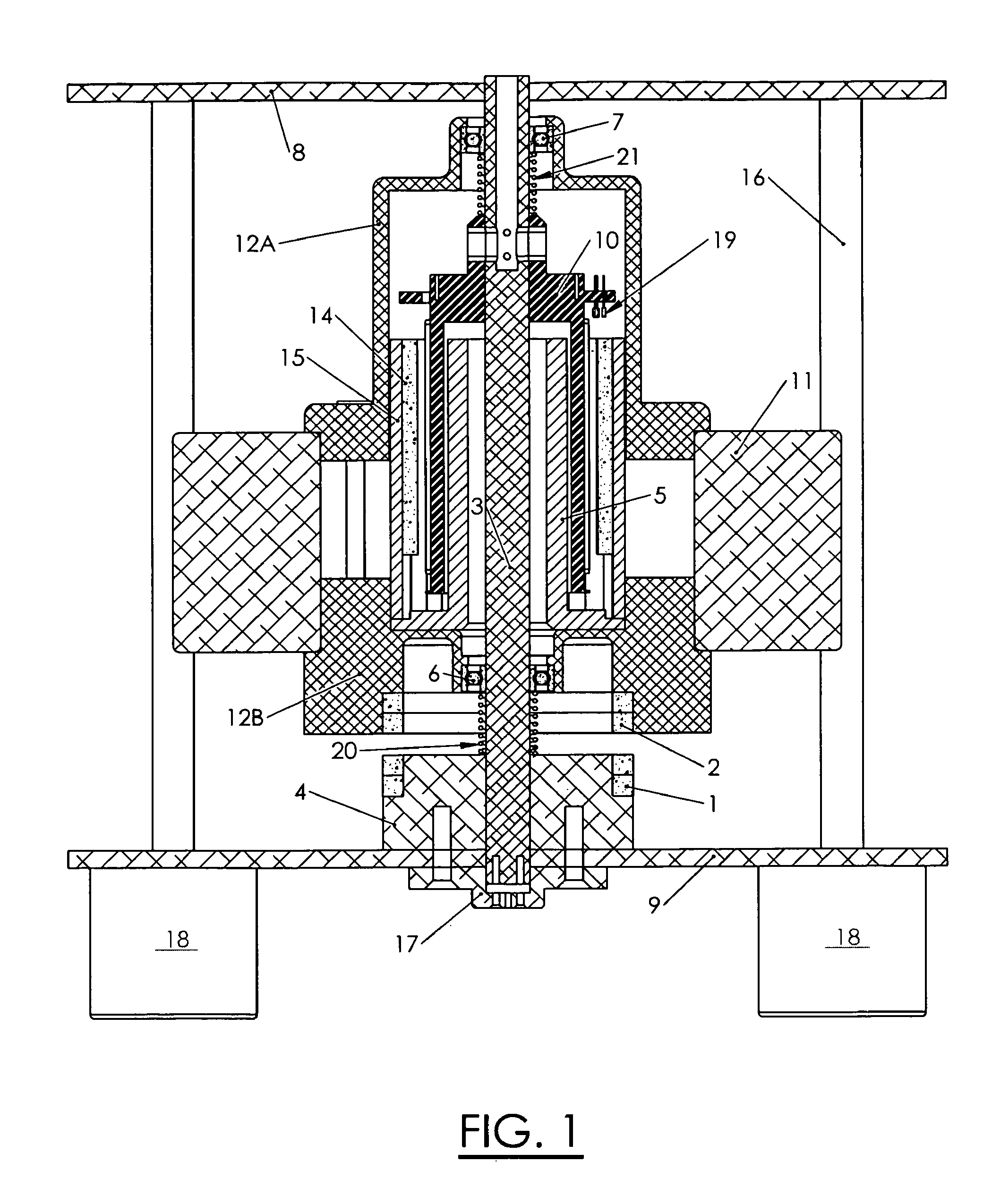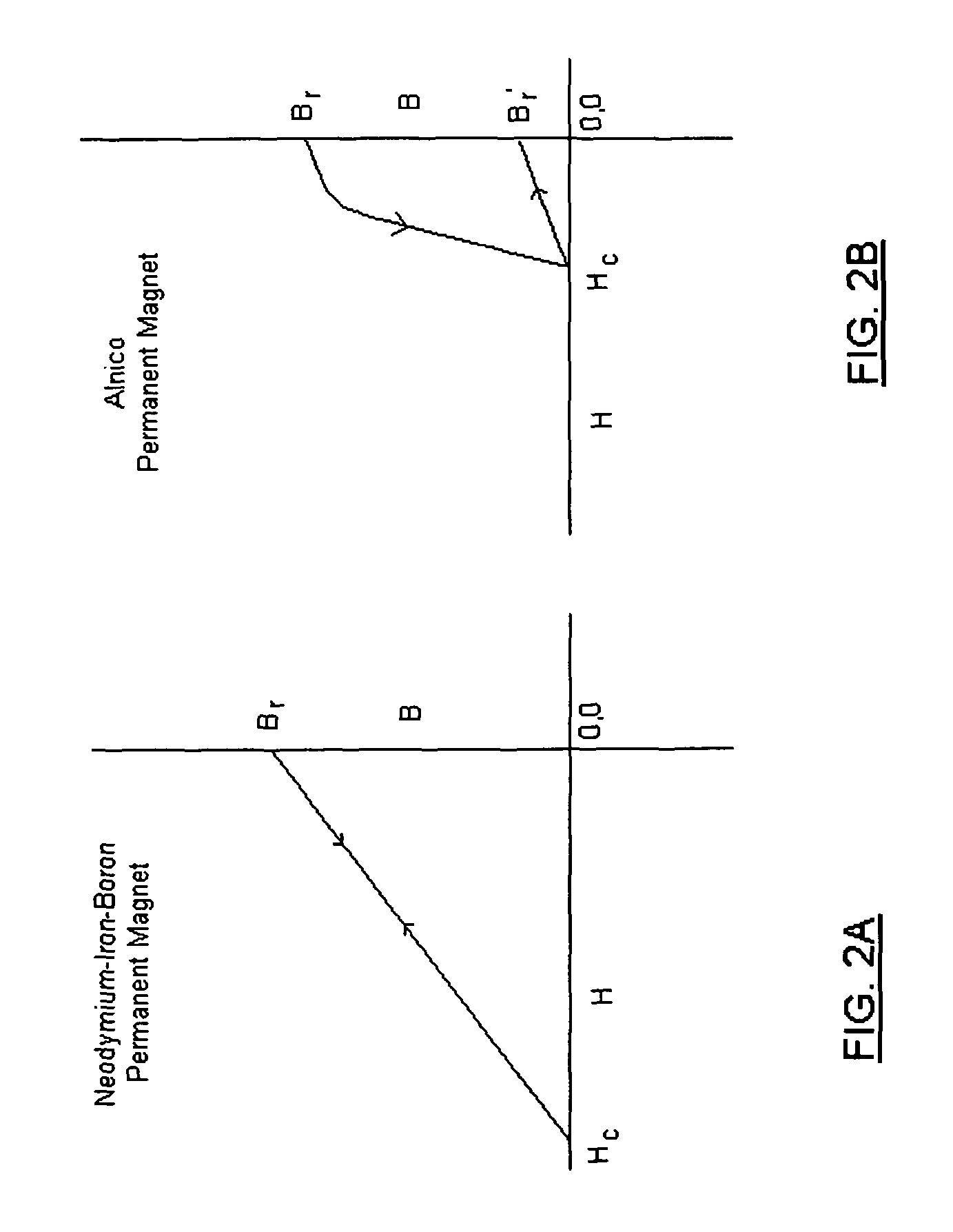Low-cost minimal-loss flywheel battery
a flywheel battery and low-cost technology, applied in the field of rotary kinetic energy storage and retrieval mechanisms, can solve the problems of low drag loss at acceptable levels, inconsistent locations with flywheel safety, and only short duration power of the flywheel storage device, so as to minimize the radial thrust of the ball bearing, no viscous drag nor vacuum enclosure contamination, and low-cost minimal loss
- Summary
- Abstract
- Description
- Claims
- Application Information
AI Technical Summary
Benefits of technology
Problems solved by technology
Method used
Image
Examples
Embodiment Construction
[0074]A flywheel battery system is herein described, for storing and regenerating on-site electric power for a DC power bus in a stationary installation, by way of reference to FIG. 1, followed by detailed descriptions of its component elements and general variations. This system converts electric power to stored kinetic energy by the system's regenerative motor (sometimes referred to as a motor / generator because it alternately serves as a motor when accelerating the flywheel rotor and as a generator when decelerating the rotor).
[0075]FIG. 1 illustrates a cross-sectional view of a preferred embodiment of the flywheel assembly according to this invention; comprising axially magnetized ring magnet 1 affixed radially and axially relative to center shaft 3 by stator magnet holder 4; and like magnet 2, oriented to repel magnet 1. Magnet 1 and magnet 2 were each constituted by axial 2-magnet stacks, so that off-the-shelf magnets could be used for prototype quantity flywheel assemblies. FI...
PUM
 Login to View More
Login to View More Abstract
Description
Claims
Application Information
 Login to View More
Login to View More - R&D
- Intellectual Property
- Life Sciences
- Materials
- Tech Scout
- Unparalleled Data Quality
- Higher Quality Content
- 60% Fewer Hallucinations
Browse by: Latest US Patents, China's latest patents, Technical Efficacy Thesaurus, Application Domain, Technology Topic, Popular Technical Reports.
© 2025 PatSnap. All rights reserved.Legal|Privacy policy|Modern Slavery Act Transparency Statement|Sitemap|About US| Contact US: help@patsnap.com



